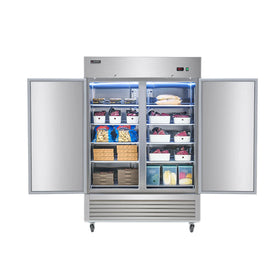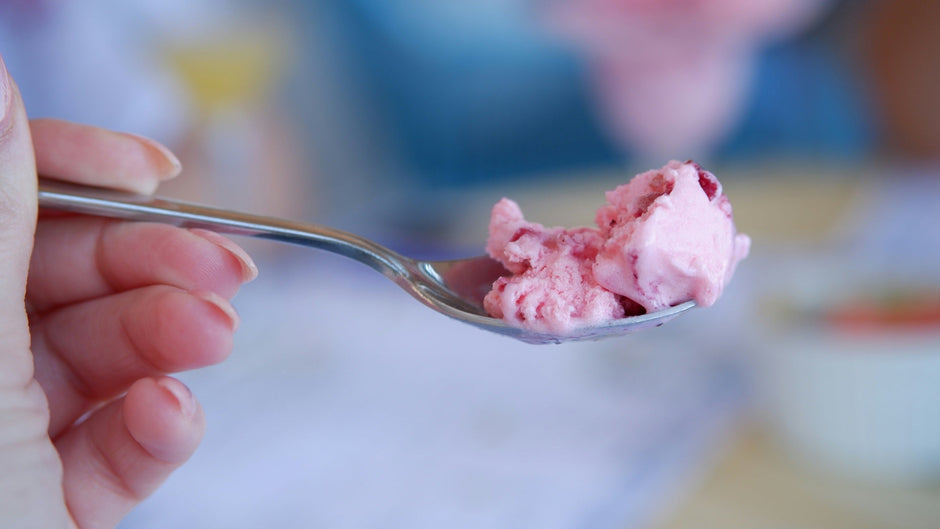Generally, strawberries can stay fresh in the fridge for up to 3-7 days, but the exact timeline depends on whether or not they have been cut and/or washed, and whether they are stored properly.
The easiest way to store your strawberries in the fridge so they last the longest is to put them in as fresh as possible, unwashed, and uncut, and with some paper towel to keep them dry. This way, they can last up to about 5-7 days before getting bad.
If you decide to wash them before storing, they might last even longer. Wash carefully with a vinegar solution, put them in a container with sufficient ventilation, and keep them dry, and they might last for about 9-10 days.
How Long Do Strawberries Last in the Fridge?
1. Fresh, Whole and Unwashed Strawberries: 3-7 days
Fresh, whole, unwashed strawberries last about 3 to 7 days in the fridge. Usually, it is best to eat them after 4 days, but they would still be edible after 7 days as long as they are kept dry and unwashed until the moment you are ready to eat them.
For maximum shelf life, store your fresh, unwashed strawberries in the container they came in. If you must transfer them to another container, transfer to a shallow container lined, and line it with paper towels to absorb the moisture from the strawberries.
2. Washed, Uncut Strawberries: 7-9 days
Generally, it is not advised to wash your strawberries before storing them in the fridge. However, if you must, wash them in a vinegar solution, preferably,
If washed using a vinegar solution and stored in a paper towel-lined container with some ventilation, strawberries can last up to 10–12 days without spoiling.
3. Sliced or cut strawberries: 1-3 days
Once cut, strawberries can only last about 1-3 days in the fridge: they start to break down quickly due to exposure to air and moisture.
Storing the cut strawberries in an airtight container might help keep them a while longer, but it is advisable to eat them within 3 days. Ensure there are no signs of spoilage before eating them.
4. Chocolate-covered strawberries: 1-2 days
Chocolate-covered strawberries have the shortest shelf life: 1 to 2 days. The fruit inside tends to release moisture, which can make the chocolate coating slippery or cause the berries to leak. They are best when eaten fresh.
How to Freeze Strawberries the Right Way
The best way to store your strawberries for long-term use would be to freeze them. If you can freeze strawberries properly, they will last 6–11 months and still be useful for smoothies, jams, sauces, and baking even after such a long time.
Follow these steps to freeze your strawberries:
1. Wash and dry completely
Use vinegar or baking soda to wash, then let the berries air dry or gently pat them dry with a towel.
2. Hull the berries
Remove the green tops. You can freeze them whole, halved, or sliced, depending on how you’ll use them.
3. Flash freeze
Flash freezing is optional, but it is also rather important because it prevents the strawberries from clumping together. Here’s how to flash freeze.
- Lay the dry strawberries on a baking sheet in a single layer.
- Freeze for 1–2 hours until solid.
4. Transfer to storage
- Move frozen strawberries to a freezer bag or an airtight container.
- Squeeze out as much air as possible to avoid freezer burn.
-
Label with the date.
Properly frozen in this manner, you can expect your strawberries to last at least 6 months. For best quality, eat or use them within 6-8 months. However, they will still be safe to eat after 10-11 months, and maybe even okay for sauces or baking after a year
How to Use Frozen Strawberries
| Use | Thaw Needed? | Tips |
| Smoothies | ❌ No | Use straight from the freezer |
| Baking | ❌ No | Toss in flour to reduce sogginess |
| Jams/Sauces | ❌ No | Cook from frozen |
| Yogurt/Oatmeal | ✅ Yes | Thaw in the fridge; they’ll be soft |
| Fresh Eating | 😐 Not ideal | Thawed strawberries lose firmness |
How to Tell if Strawberries Have Gone Bad
Sometimes strawberries look okay from a distance, and you may not realize until you take a closer look or do a brief sniff test that they are bad. When you notice a few going bad, remove them immediately, as the spoilage may quickly spread to the rest.
Here are 4 major signs that indicate your strawberries are spoiled and unsafe to eat:
- Mold: Fuzzy white, green, or gray patches are a sure sign. Mold spreads quickly, so toss the entire container if more than one berry is affected.
- Soft or mushy texture: If they’re wet, slimy, or feel like they’re collapsing when touched, they’re past their prime.
- Leaking juice: Excess liquid at the bottom of the container usually means some berries have started to rot.
- Fermented smell: A sour or “winey” odor is a clear sign of decay.
Best Fridges to Store Your Strawberries
1. Commercial Solid Door Reach-In Freezer 18.7 cu. ft. Capacity
This reach-in commercial refrigerator is designed for smaller kitchens. It has a total capacity of 18.7 cu. ft, enough space to hold all your grapes, fruits, vegetables, desserts, and even frozen foods for your home or business.
- Adjustable temperature: -11 to 14°F
- An auto defrost function.
- 5 adjustable shelves, holding up to 88 lb each.
- A Cubigel compressor and copper evaporator for fast and even cooling
- Certified for safety and quality by ETL, ETL Sanitation, and DOE
2. 81'' Commercial Solid Door Reach-In Refrigerator 61 cu. ft. Capacity
This commercial reach-in refrigerator is perfect if your commercial kitchen deals in large amounts of grapes and other perishable items like eggs, milk, vegetables, and fresh produce.
- 61 cu. ft., and a temperature range of 32-50°F
- A stronger Cubigel compressor and copper evaporator.
- 15 adjustable shelves, with each capable of holding up to 88 lb.
- LED lights light up, allowing you to empty or stock up your refrigerator with ease.
Certified for safety and quality by ETL, ETL Sanitation, and DOE
More from Wilprep
Wilprep’s collection of commercial refrigerators contains a variety of models, including display refrigerators and open-air models to suit the needs of diverse businesses.
In addition to top-quality refrigerators, Wilprep offers other kinds of commercial kitchen equipment to take your business to the next level.
Check out Wilprep’s commercial convection ovens, commercial gas ranges, and even soup kettles.
How to Wash Strawberries the Right Way
Strawberries need to be cleaned carefully. When washing strawberries, keep in mind that they are porous, soft-skinned, and prone to absorbing water. Do not soak them too long or try to store them when they are wet: this actually makes them spoil faster.
Follow these steps to wash strawberries:
Method 1: Quick Cold Water Rinse
A quick water rinse is the best method of washing strawberries if you intend to eat them immediately. Do not use it on strawberries you intend to store in the fridge.
- Rinse whole strawberries under cold running water.
- Gently rub with your fingers to loosen dirt.
- Pat dry with a towel and serve.
Method 2: Vinegar Wash (Extends Shelf Life)
If you are cleaning and prepping your strawberries to store for 7–10 days, then a vinegar solution is the best way to wash them. The vinegar helps strawberries last longer because it kills mold spores and bacteria that are already on the surface of the fruit, thus ensuring they stay fresh for longer and do not get spoiled.
- Mix 1 part white vinegar with 3 parts cold water.
- Soak strawberries for 5 minutes to kill mold spores and bacteria.
- Rinse well under cold water to remove any vinegar flavor.
- Dry completely—air-dry on paper towels or pat dry gently.
- Store in a container lined with paper towels, lid slightly ajar for airflow.
Method 3: Baking Soda Wash (Pesticide Removal)
For store-bought berries,
- Dissolve 1 teaspoon of baking soda in 4 cups of water.
- Soak for 5–10 minutes, then rinse and dry thoroughly.
Method 4: Saltwater Soak (Bug Removal)
Best for: Garden-picked berries
- Mix 1 tablespoon of salt in 2 cups of water.
- Soak for 5 minutes to draw out tiny insects.
- Rinse thoroughly with cold water, then dry.
Never store strawberries while they’re wet. Water accelerates decay, especially in sealed containers.
Final Thoughts
Storing strawberries properly ensures they stay fresh and delicious for as long as possible. Whether you keep them in the fridge for short-term storage or freeze them for long-term use, following these simple tips will help you make the most of your grapes.
Try these methods and enjoy fresh grapes whenever you like!
You might also want to check out this complete guide to storing shrimp in the fridge.










